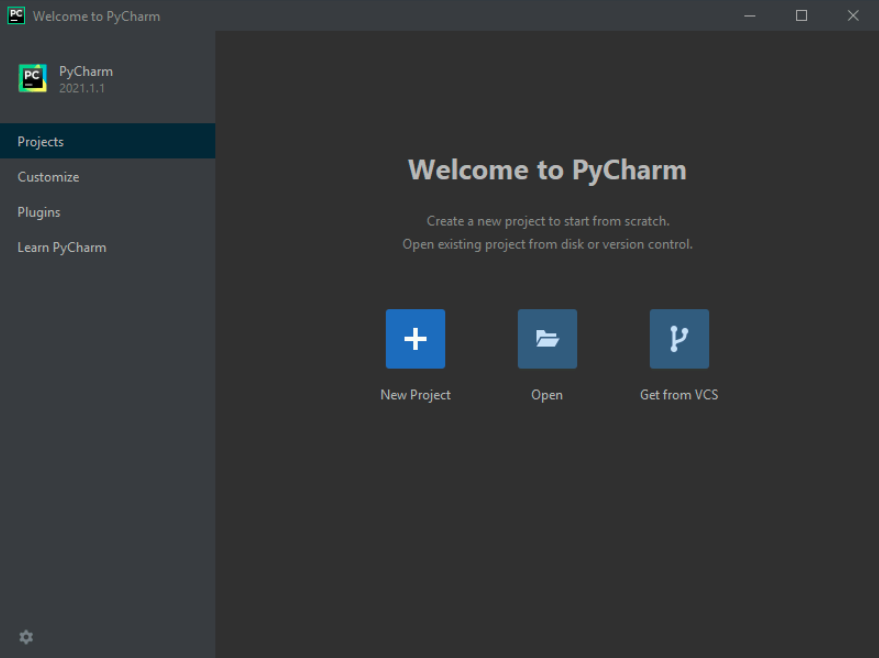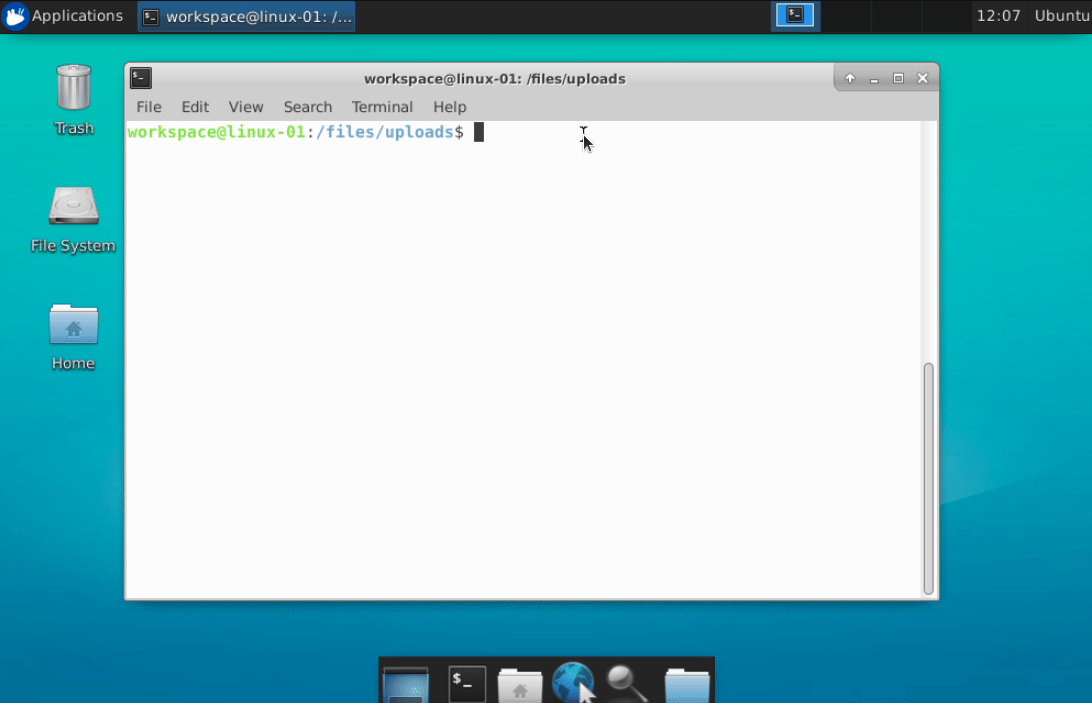Installing text editors on your Virtual Machine
If you will be writing code on the Virtual Machine, you might want a bit more sophisticated text editor than Notepad. In this article, we will walk you through installing VSCode, Sublime Text and PyCharm on your Linux or Windows Virtual Machine in the Aridhia DRE Workspace.
If you encounter any issues with the installations, please contact the Service Desk.
VSCode
Sublime Text
PyCharm
Installing VSCode on a Linux Virtual Machine
1. Download the newest distribution
Because Virtual Machine access to the Internet is restricted, you will need to do this step on your own computer. Navigate to the VSCode distributions page and download the latest *.deb 64 bit distribution.

2. Upload to Files
In the Aridhia DRE Workspace, if you don't have an uploads folder already, create a new one by going into the Files tab and pressing on New Folder. Name your folder uploads.
Then navigate to the Files tab and open your uploads folder. From here, press the Upload tab -> 'Upload files or data'. Upload your VSCode installation file ( *.deb) here. More information about uploading files can be found on the Uploading files via the Workspace page.
3. Install VSCode
Connect to the Linux Virtual Machine and open the terminal. First, change the directory:
cd /files/uploads
Then, install the *.deb package:
sudo apt install ./code_1.47.2-1594837870_amd64.deb
Note that the version number might be different at the time of installation.
4. Open VSCode
Running the following command should open VSCode text editor:
code
Alternatively, you can also open VSCode by going into Applications -> Development. Here you should see the VSCode icon.
Installing VSCode on a Windows Virtual Machine
1. Download the newest distribution
Because Virtual Machine access to the Internet is restricted, you will need to do this step on your own computer. Navigate to the VSCode distributions page and download the latest Windows distribution.
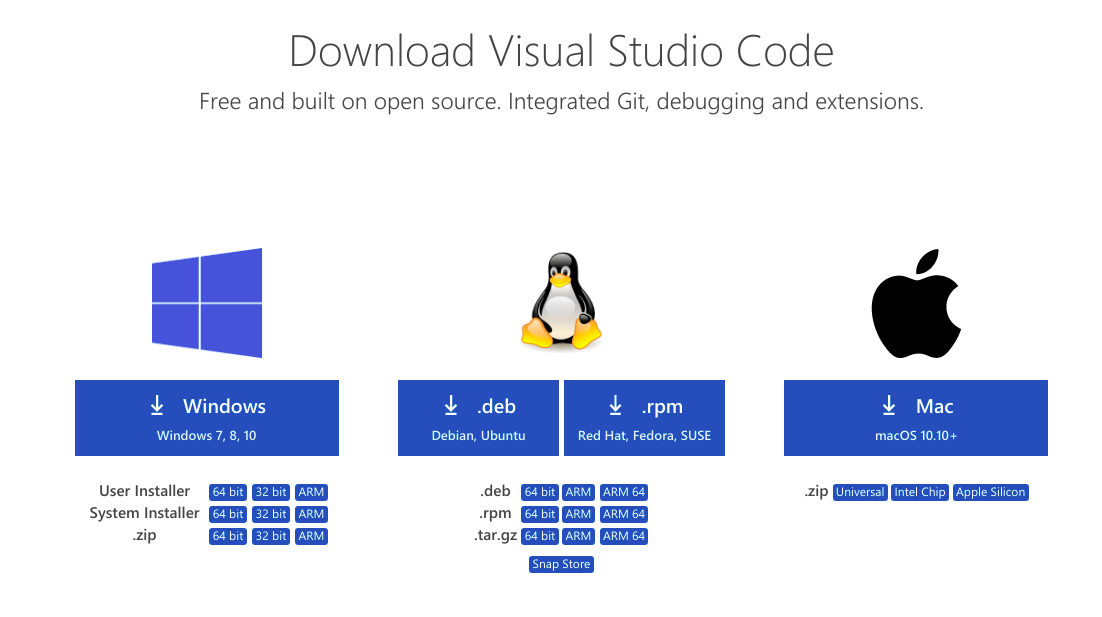
2. Upload to Files
In the Aridhia DRE Workspace, if you don't have an uploads folder already, create a new one by going into the Add tab and pressing on New Folder. Name your folder uploads.
Then navigate to the Files tab and open your uploads folder. From here, press Add tab -> 'Upload File'. Upload your VSCode installation file ( *.exe) here. More information about uploading files can be found on the Uploading files via the Workspace page.

3. Install VSCode
Connect to the Windows Virtual Machine and navigate to the uploads folder. Double click on the executable, and follow the instructions to complete the installation.
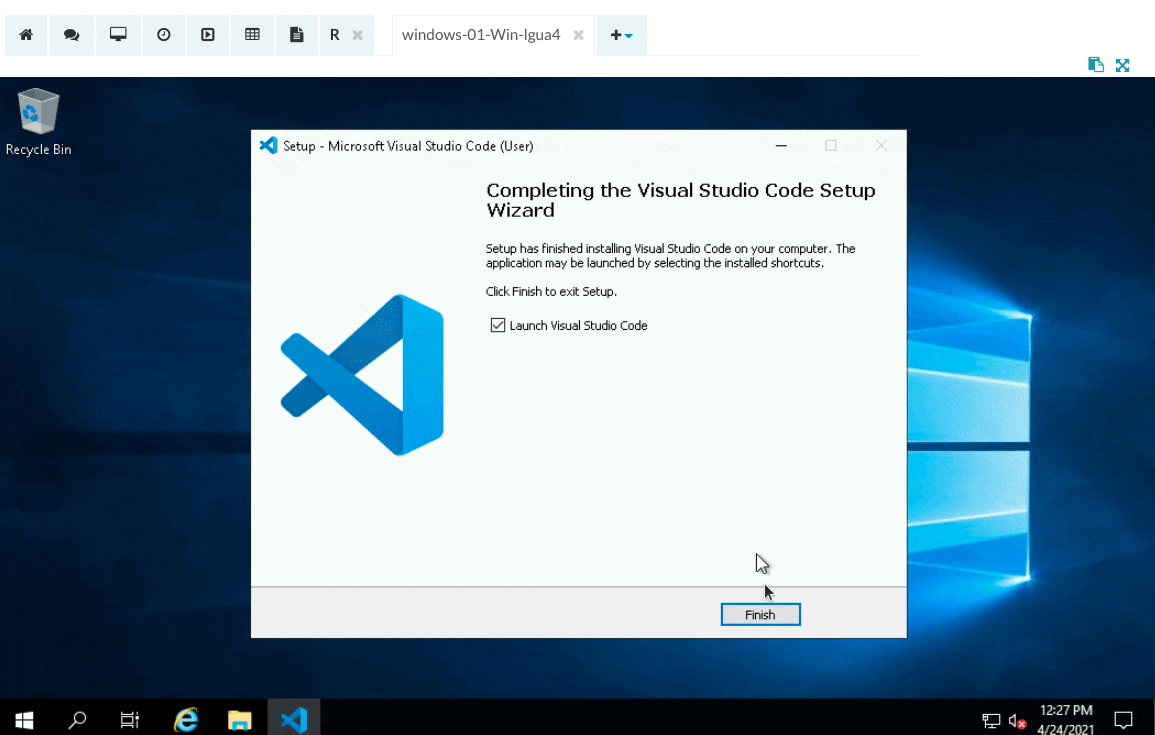
Installing Sublime Text on a Linux Virtual Machine
1. Download the newest distribution
Because Virtual Machine access to the Internet is restricted, you will need to do this step on your own computer. Navigate to the Sublime Text 3 distributions page and download the latest Linux 64 bit distribution.
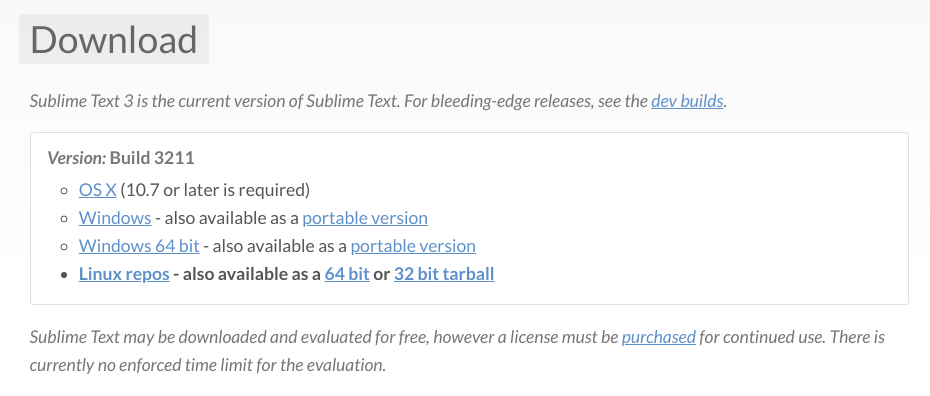
2. Upload to Files
In the Aridhia DRE Workspace, if you don't have an uploads folder already, create a new one by going into the Add tab and pressing on New Folder. Name your folder uploads.
Then navigate to the Files tab and open your uploads folder. From here, press Add tab -> 'Upload File'. Upload your Sublime Text file ( *.tar.bz2) here. More information about uploading files can be found on the Uploading files via the Workspace page.
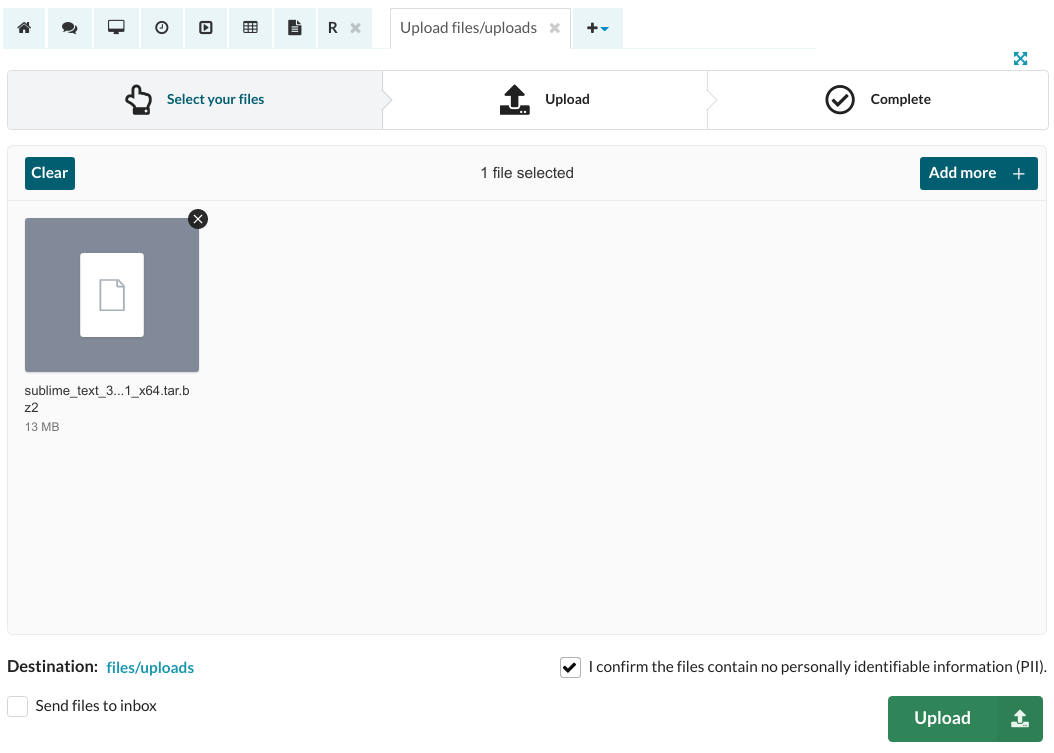
3. Install Sublime Text
Connect to the Linux Virtual Machine and open the terminal. First, change the directory:
cd /files/uploads
Uncompress the files to the opt directory:
sudo tar vxjf sublime_text_3_build_3211_x64.tar.bz2 -C /opt/
Please note that the build number might be different at the time of installation.
4. Create a symlink
Create a symbolic link so that Sublime can be run from the terminal:
sudo ln -s /opt/sublime_text_3/sublime_text /usr/bin/sublime
5. Open Sublime Text
Running the following command should open Sublime text editor:
sublime
Installing Sublime Text on a Windows Virtual Machine
1. Download the newest distribution
Because Virtual Machine access to the Internet is restricted, you will need to do this step on your own computer. Navigate to the Sublime Text 3 distributions page and download the latest Windows 64 bit distribution.

2. Upload to Files
In the Aridhia DRE Workspace, if you don't have an uploads folder already, create a new one by going into the Add tab and pressing on New Folder. Name your folder uploads.
Then navigate to the Files tab and open your uploads folder. From here, press Add tab -> 'Upload File'. Upload your Sublime Text installation file (*.exe) here. More information about uploading files can be found on the Uploading files via the Workspace page.
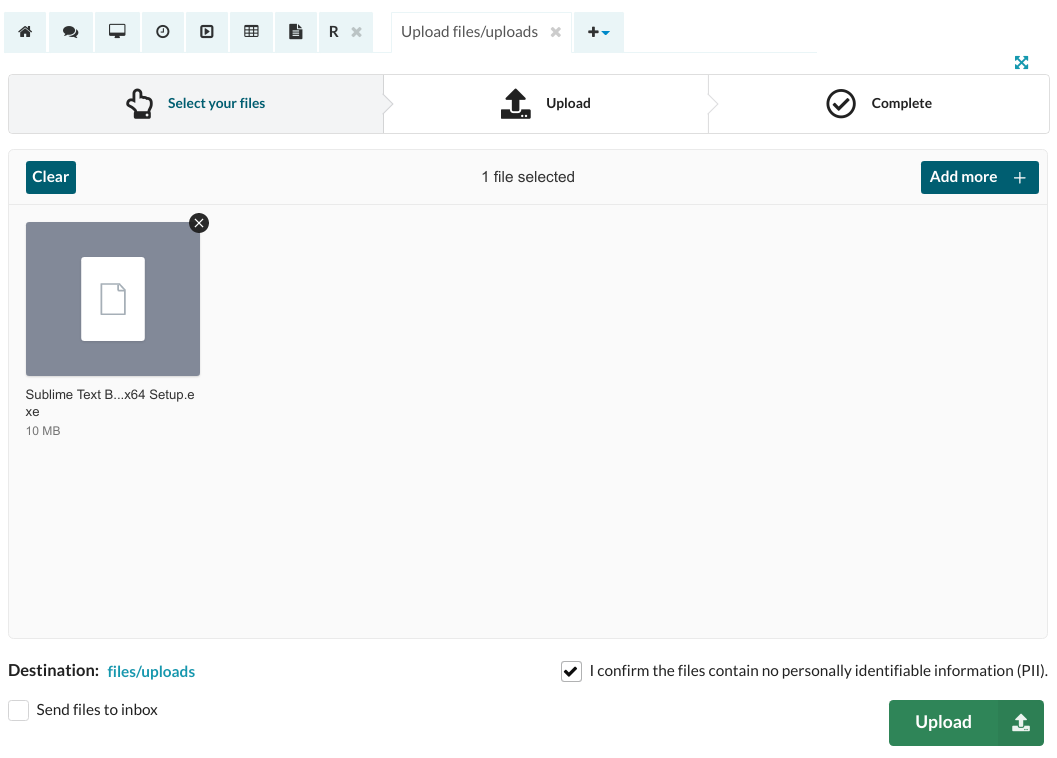
3. Install Sublime
Connect to the Windows Virtual Machine and navigate to the uploads folder. Move the Sublime installer to the desktop.
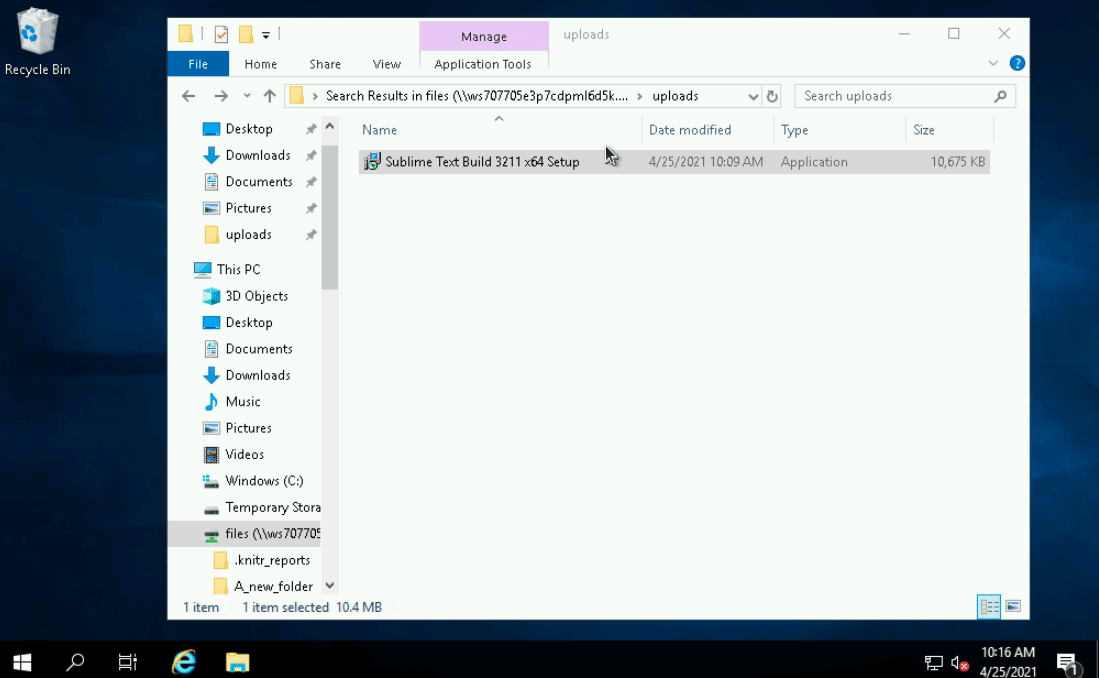
Next, double click on the executable, and follow the instructions to complete the installation.
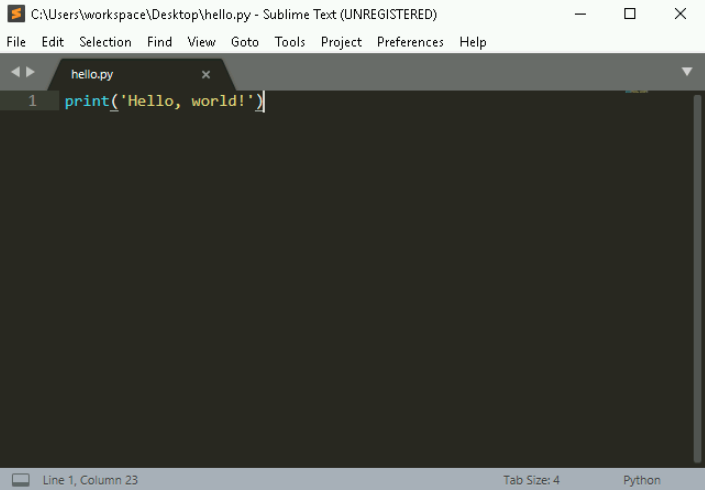
Installing PyCharm on a Linux Virtual Machine
1. Download the newest distribution
Because Virtual Machine access to the Internet is restricted, you will need to do this step on your own computer. Navigate to the PyCharm distributions page and download the latest Community version.

2. Upload to Files
In the Aridhia DRE Workspace, if you don't have an uploads folder already, create a new one by going into the Add tab and pressing on New Folder. Name your folder uploads.
Then navigate to the Files tab and open your uploads folder. From here, press Add tab -> 'Upload File'. Upload your Sublime Text file ( *.tar.gz) here. More information about uploading files can be found on the Uploading files via the Workspace page.
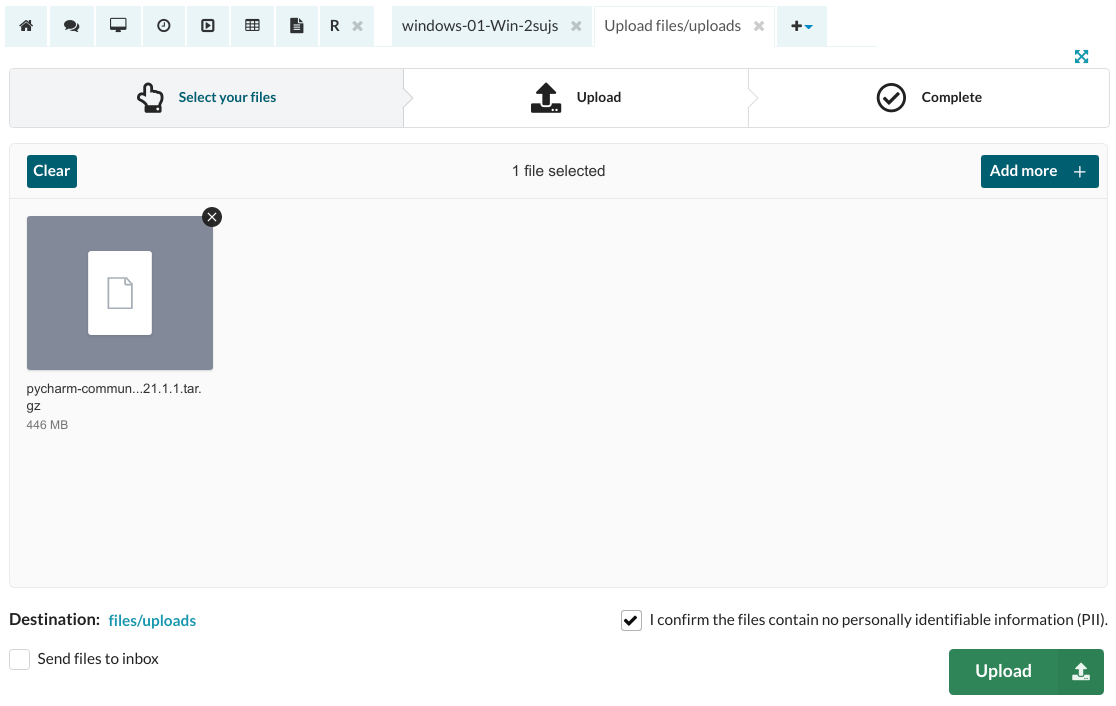
3. Install PyCharm
Connect to the Linux Virtual Machine and open the terminal. First, change the directory:
cd /files/uploads
Uncompress the files to the opt directory:
sudo tar xfz pycharm-community-2021.1.1.tar.gz -C /opt/
Please note that the version number might be different at the time of installation.
Grant the required permissions:
sudo chown -R workspace:workspace /opt/pycharm-community-2021.1.1
Start PyCharm:
sh /opt/pycharm-community-2021.1.1/bin/pycharm.sh
Complete the first-time-run wizard to get started. You can accept all the default options in the setup.
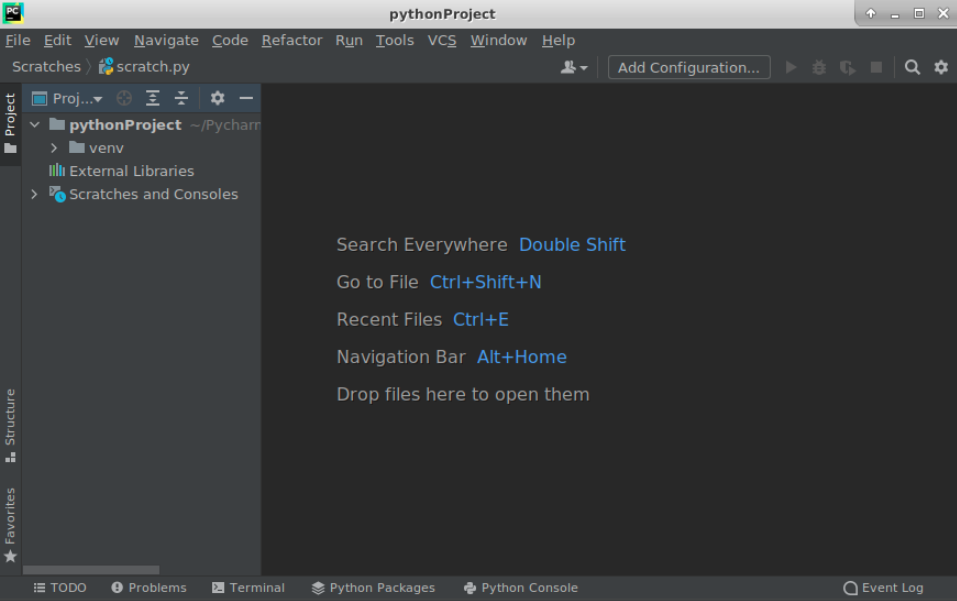
Installing PyCharm on a Windows Virtual Machine
1. Download the newest distribution
Because Virtual Machine access to the Internet is restricted, you will need to do this step on your own computer. Navigate to the PyCharm distributions page and download the latest Community version.
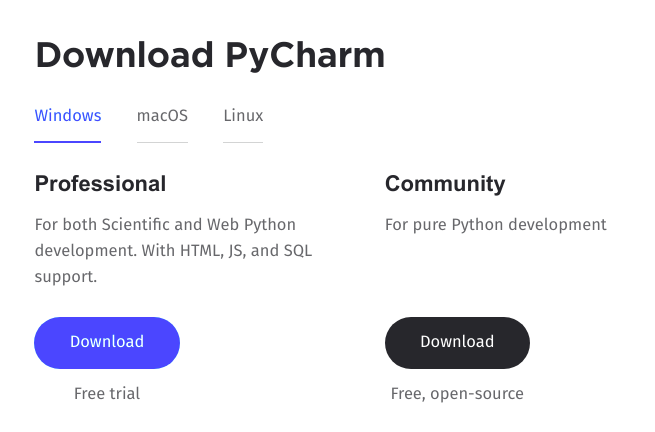
2. Upload to Files
In the Aridhia DRE Workspace, if you don't have an uploads folder already, create a new one by going into the Add tab and pressing on New Folder. Name your folder uploads.
Then navigate to the Files tab and open your uploads folder. From here, press Add tab -> 'Upload File'. Upload your PyCharm installation file ( *.exe) here. More information about uploading files can be found on the Uploading files via the Workspace page.

3. Install PyCharm
Connect to the Windows Virtual Machine and navigate to the uploads folder. Move the PyCharm installer to the desktop.
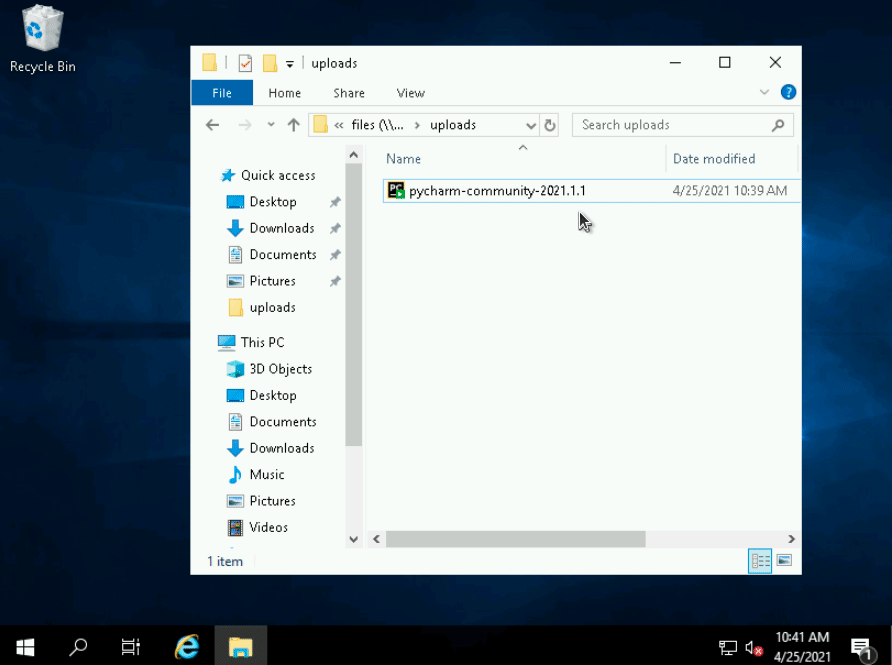
Next, double click on the executable, and follow the instructions to complete the installation.
